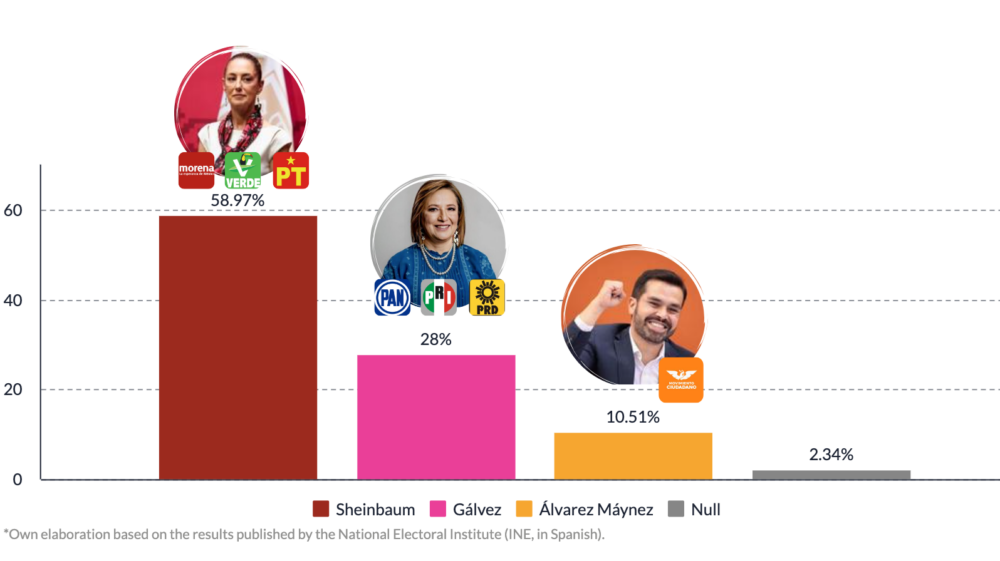Morena sweeps the election, and Sheinbaum is set to become Mexico’s first female president

With 84.35% of the votes counted, Claudia Sheinbaum, the candidate of the ruling coalition Seguimos Haciendo Historia (SHH, in Spanish), has been elected the next president of Mexico for the 2024-2030 term, currently securing 58.91% of the votes. Sheinbaum prevailed with a difference of almost 31 points compared to Xóchitl Gálvez, the candidate from the coalition Fuerza y Corazón por Mexico (FyCxM, in Spanish), who garnered 28% of the votes, and Jorge Álvarez Máynez of Partido Movimiento Ciudadano (MC, in Spanish), who received 10.51% of the votes.

The president-elect, who will officially take office on October 1st, will become the first female president and the most voted president in the history of Mexico. Xóchitl Gálvez of the Fuerza y Corazón por Mexico (FyCxM) coalition failed to surpass 28% of the votes, while Jorge Álvarez Máynez of the Movimiento Ciudadano (MC) party managed only 10%.
Notably, this result is significant for the MC, as it marks the first time the party has run in elections independently, without being part of a coalition, and with its own candidate.
The Congress of the Union: Close to achieving “Plan C”
In the legislative arena, initial projections indicate that the ruling coalition will maintain an absolute majority in both chambers of Congress. Furthermore, they are on track to achieve the minimum number of seats required for a qualified majority in the Chamber of Deputies. Regarding the Senate, while final results are pending, early counts suggest that the ruling party might also secure a qualified majority, potentially easing the path for constitutional reforms. The new legislature is set to assume office on September 1st.

With 84% of the votes counted, initial projections by the INE indicate that Morena and its allies (PVEM and PT) will not only retain an absolute majority in both chambers but have comfortably secured a qualified majority in the Chamber of Deputies, potentially obtaining between 346 and 380 seats. The scenario is different in the Senate, presenting greater complexity. Projections suggest that the ruling coalition could secure between 76 and 88 seats. To achieve a qualified majority, the coalition needs to reach 86 seats. While possible, this scenario is less likely because, unlike the Chamber of Deputies, the distribution of seats in the Senate tends to be much tighter due to the requirement for a leading minority. This means the allocation of seats could potentially favor the opposition, making it more difficult for the ruling coalition to advance constitutional reforms in this chamber. Nevertheless, the results for the ruling party could simplify negotiations to move forward with such reforms.
